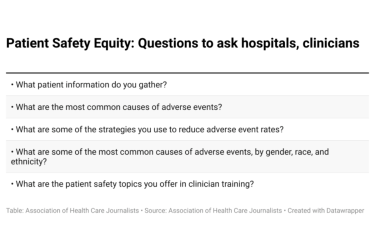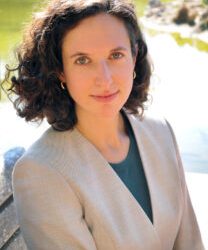
One recent workday, I called my primary care physician’s office and immediately was transferred to voicemail. Usually, I’m perhaps the “fifth caller in queue,” or on a lucky day, the second caller. That day — probably because it was a Monday in winter and people were kicking off their week by calling the doctor — the perky robot voice told me that I was the 14th caller. I hung up, determined to call again later.
If you’ve had similar experiences, you’re on the receiving end of a growing shortage of primary care doctors in the United States. This is a trend to monitor with plenty of stories to tell, especially from the perspective of social determinants of health.
A look at the patterns in California shows why.
The California Health Care Foundation (CHCF) has created an interactive map showing where primary care clinicians are in sufficient supply and where their numbers are woefully inadequate for the populations they serve. It will come as no surprise that where the situation is most dire, the population also is likelier to be experiencing other socially-determined challenges.
For example, look at this map of the geography of child poverty in California from 2011 to 2014, which was developed by the Public Policy Institute of California. The darker the green, the deeper the poverty. Compare that with the CHCF’s interactive map, which shows white and light tan spaces where the shortage of primary care clinicians are the most serious.
Of course, some of the same factors that influence why poverty hits a region hard also play into why primary care clinicians don’t rush to put down roots there. The stakes are growing as the primary care shortage is predicted to worsen, with some data suggesting a national shortfall as high as 49,300 doctors by 2030 — only 11 years away. An estimated one in eight or more people in the United States live in a county where primary care clinicians are in short supply.
A study published in JAMA Internal Medicine last month suggests that an adequate availability of primary care physicians is a real matter of life or death. The authors report that average life expectancy increases modestly by 51.5 days for every additional 10 primary care doctors available to treat every 100,000 people. From 2005 to 2015, although the absolute number of primary care doctors has increased in the United States, the density has declined. This research confirms earlier findings that having access to a primary care doctor can affect population life expectancy, including deaths related to cardiovascular disease and cancer.
Many other factors play into these shortages, including the widening pay gap between primary care physicians and specialists (although the shortage now may be helping to boost some salaries). Some medical schools, alert to the issue, are offering fast-track programs to enable medical students to slide straight into practicing after a three-year program rather taking the typical four years. That’s available at just a handful of schools, though, and won’t be enough to fill the gaps.
By the time I did reach real person at my doctor’s office, I found out that unless I wanted to see a nurse practitioner I couldn’t get an appointment for at least a week. Nurse practitioners and physician assistants have emerged as one way to boost access to primary care, leading some to view these professionals as a way to fill the gap. These professionals can undergo as many years of education and training as a physician to work in primary care. The rationale that their different professional designations warrant using them as lower-paid stopgaps to the physician shortage doesn’t necessarily come across as an equitable solution.
Obviously, access to primary care, regardless of the provider’s title, involves many social determinants of health with plenty of stories to tell and ways to tell them. The maps and links in this post offer a place to start. Some ideas to consider:
- Rural urban health care access, not only their differences but also the factors that are common to both (e.g., poor public transit in urban areas can be just as much of a barrier as the distance in rural areas; poverty is often common to both).
- Long wait times to get into local clinics because of primary care shortages and factors such as disability, time off of work, lost pay and productivity, and how they play into these wait times as a barrier to health care
- Long wait times on a phone to make an appointment when working people are not in a position to sit on the phone for an hour.
- The emergence of concierge medicine as a roadblock to primary clinicians working in the region.
- Comparative outcomes with other primary care providers, such as nurse practitioners or physicians assistants.
- Comparative outcomes for the most common diagnoses in primary care and their differentials in areas with sufficient access versus areas with shortages.









